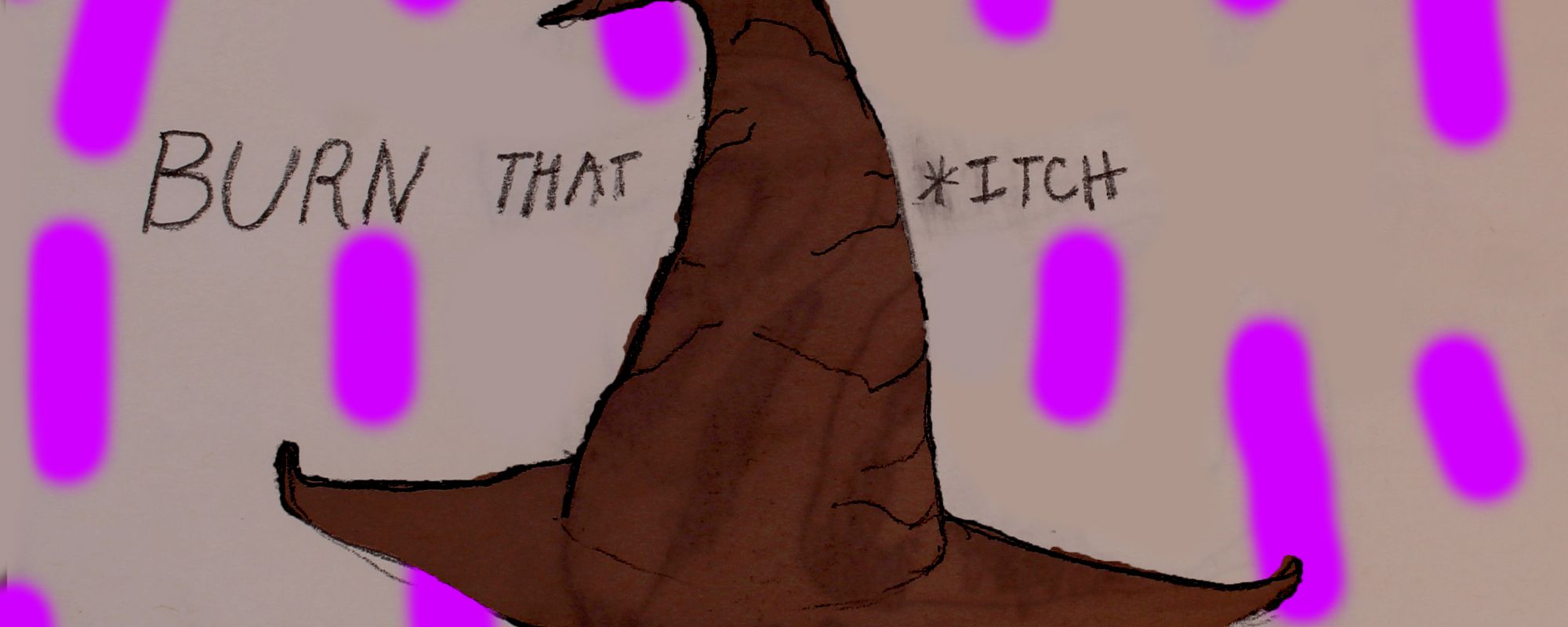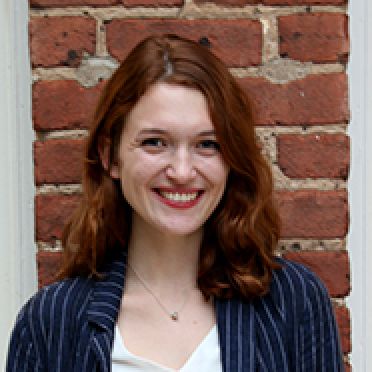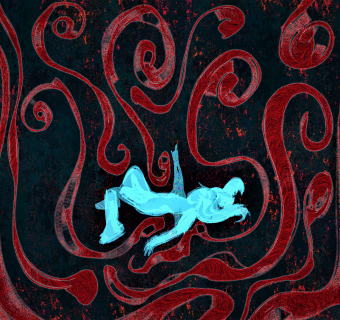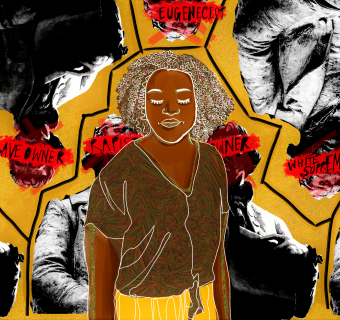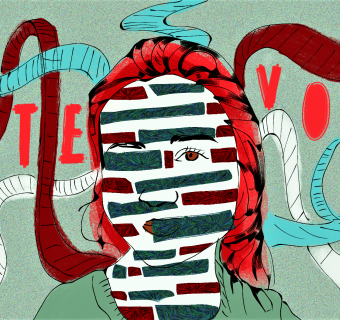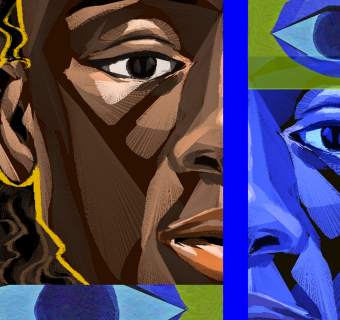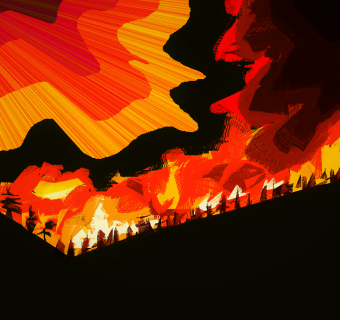You will be asked one question when your house drops in Oz.
“Are you a good witch or a bad witch?”
Witches’ allegiances are straightforward in The Wizard of Oz (1939). It’s safe to assume that green-faced women commanding monkey armies will steal your shoes and kill your dog, while human Peeps who travel in pink bubbles and sing to munchkins will, well, not. Every child knows “only bad witches are ugly.”
Outside of Oz, as the 1975 clusterfuck Monty Python and the Holy Grail brilliantly illustrates, any woman who looks like a witch also burns like one—even when the witch hunters are also the witch makers.
“They dressed me up like this, and this isn’t my nose, it’s a false one!” says the accused woman in Monty Python, pointing to the classic hat and nose.
“Well, we did do the nose,” admits one of the men. “And the hat. But she’s a witch!”
They burn her anyway.
Witches have always been products of the anxious male imagination. “Show me your witches and I’ll show you your feelings about women,” said witch-slash-podcaster-slash-author Pam Grossman to the New York Times. Witchcraft is history’s flammable catch-all for “unpleasant” womanhood: a just-add-water identity that, like false noses and pointed hats, men imposed to undermine women who existed outside the patriarchal fold. As a shape-shifting anxiety fever dream, the historical witch has few fixed characteristics, though independence often made women targets for witch hunts, Serenity Young explains in her book Women Who Fly: Goddesses, Witches, Mystics, and other Airborne Females (2018). “The social reality of the women accused of witchcraft was that they were mostly single (either unmarried or widowed), rural (and thus less influenced by elite religious and social views), poor (and thus powerless), and often older,” writes Young. “In short, they were women free of male supervision in an age that had no way of conceptualizing such women.” The generic witch—the nameless villain in The Brothers Grimm’s fairy tale “Hansel and Gretel” (1812), for example—is a grotesque caricature of Young’s typical accused woman. Disabled, “shrill,” and single, the old witch is not only unfeminine in these stories, but inhuman, with “red eyes” and “a keen sense of smell, like [an] animal.” A monster, in other words.
Simply put, a witch is a woman who can and does leverage her own power. Remorselessly.
The fairy tale begins when Hansel and Gretel leave home—and with it, the social order—and lose their way in the woods, where “frightening shadows and evil eyes [surround] them in the darkness.” The forbidden forest emanates all that is demonic, dangerous, and supernatural; or, you know, female. Like the witch herself, the woods are removed from the ruling (male) social order. Both are the evil other. Unmaternal qualities assume criminal dimensions in stories where the witch lives in the woods (read: the evil, female-ruled wilderness where Bad Things Happen). The forest becomes a site of danger and chaos where children vanish, whether at the witch’s hands (“Hansel and Gretel”) or her flying monkeys’ (The Wizard of Oz). These witches claim children—the products of female reproduction—as their rightful property. This is their great threat to society outside the woods.
“When a child came into her power she would kill it, cook it, and eat it,” write the Brothers. When she has power, the woman becomes the corrupt, rogue mother who uses her domestic skills to bake the children whom she, in theory, was supposed to feed (though to be fair, she does). As Young writes, the truly wicked witches “are perverters of domesticity, using its tools such as broomsticks to fly and cauldrons to cook babies.” Simply put, a witch is a woman who can and does leverage her own power. Remorselessly.
The uncontrollable woman is brought under control when, finally, she burns. Gretel tricks the witch into a flaming oven—a thinly veiled metaphor for hell—where Hansel would have been cooked. The witch then goes full monster, “howl[ing] in the most dreadful way imaginable, but Gretel ran away, and the wicked witch burned to death miserably.” Dorothy throws a bucket of water onto the Wicked Witch of the West (only meaning to extinguish Scarecrow, whom the witch set on fire), and melts her as though she were the flame itself. “Who would’ve thought a good little girl like you could destroy my beautiful wickedness!” she shrieks in her iconic death scene.
But the good little girl is the only one who can destroy the witch’s beautiful wickedness. Gretel and Dorothy must vanquish their witches, rejecting their subversive and powerful versions of womanhood to save their male companions and, by extension, the patriarchal social order. She must be the one throwing the water or lighting the match to contain threats of female power—including her own. The witch narrative is fundamentally, inescapably, the story of innocence and youth prevailing over female monstrosity. When Dorothy’s house lands in Oz, it is on top of the Wicked Witch of the East; the domestic center most literally crushes the independent and powerful woman. Then, as you know, they all lived happily ever after.
Calling a real or fictional woman a witch sought to shame, isolate, and castrate her in order to limit her influence on other women—it also betrays deeper truths about her power.
The witch may be monstrous and loathsome, but her power is seldom denied. Calling a real or fictional woman a witch sought to shame, isolate, and castrate her in order to limit her influence on other women—it also betrays deeper truths about her power. “We can find powerful and awe-inspiring visions of ourselves, hidden inside and underneath the stories patriarchy tells to shame us,” writes Sady Doyle in her new release Dead Blondes and Bad Mothers: Monstrosity, Patriarchy, and the Fear of Female Power (2019). “[Female monsters] are lethally beautiful or unbearably ugly, sickly sweet and treacherous or filled with animal rage, but they always speak to the qualities men find most threatening in women: beauty, intelligence, anger, ambition.”
There is a mass cultural, and therefore commercial, movement to celebrate the witch as Doyle describes her. This week the New York Times asked, When did everyone become a witch? There are podcasts, tarot cards, hexes to curse Brett Kavanaugh and Donald Trump, a witch village in Italy, and a deluge of witchy books in this quarter’s new release pile. The Coven, a workspace for women, non-binary, and trans people, opened last year in the Twin Cities. You can purchase a witch hat incense holder from Urban Outfitters for $24. There’s a witch running for President. There’s a President who thinks he is a witch, or at least being hunted like one.
At the heart of the new books—asking questions like, In what magical ways can you pamper, soothe, and care for your body and spirit? and, How can you use rituals and spells to create a magical space with your hearth and home?—is a push to reclaim witchiness for the witches, like the campaigns to take ownership of the nasty woman with weaponized merchandise during the 2016 election or the slut in the 2011 SlutWalks.
Can women reclaim that to which we never laid claim? While the question remains “Are you a good witch or a bad witch?” can anyone be understood outside of witchiness? Can we now reclaim the false noses and pointed hats and don them ourselves? Although the dichotomies attempting to describe womanhood—good witch, bad witch, nasty woman, silent woman, slut, prude—are not the creations of the women who bear them, I want to believe the nasty woman can emerge from the woods where the witch was once banished. I want to believe they won’t burn her anyway.

